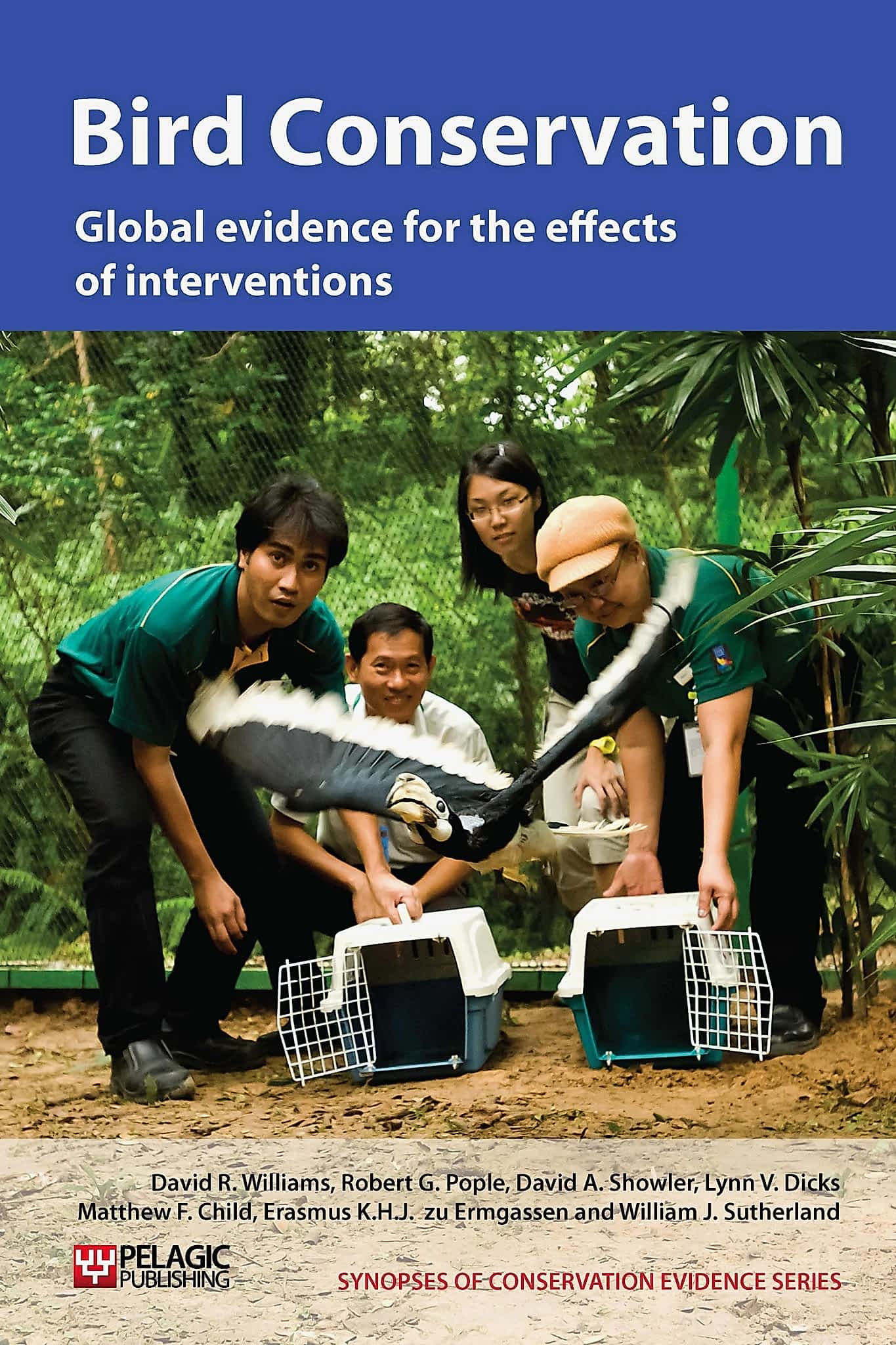Actions to conserve biodiversity
We have summarised evidence from the scientific literature about the effects of actions to conserve wildlife and ecosystems.
Review the evidence from the studies
Not sure what Actions are? Read a brief description.
454 Actions found
Refine
Hide
454 Actions found
Download Actions
Order results by:
| Action | Effectiveness | Studies | Category | |
|---|---|---|---|---|
Reduce pesticide or herbicide use generally Action Link | Likely to be beneficial | 9 | ||
Provide artificial nesting sites for raptors Action Link | Likely to be beneficial | 9 | ||
Provide or retain un-harvested buffer strips Action Link | Trade-off between benefit and harms | 8 | ||
Create uncultivated margins around intensive arable or pasture fields for birds Action Link | Likely to be beneficial | 8 | ||
Set longlines at night to reduce seabird bycatch Action Link | Trade-off between benefit and harms | 8 | ||
Use prescribed burning on shrublands Action Link | Trade-off between benefit and harms | 8 | ||
Employ grazing in non-grassland habitats Action Link | Trade-off between benefit and harms | 8 | ||
Control predators not on islands for wildfowl Action Link | Awaiting assessment | 8 | ||
Clean birds following oil spills Action Link | Unlikely to be beneficial | 8 | ||
Release birds as adults or sub-adults, not juveniles Action Link | Unknown effectiveness (limited evidence) | 8 | ||
Manage hedges to benefit birds Action Link | Unknown effectiveness (limited evidence) | 7 | ||
Plant nectar flower mixture/wildflower strips for birds Action Link | Likely to be beneficial | 7 | ||
Create skylark plots for bird conservation Action Link | Likely to be beneficial | 7 | ||
Reduce management intensity on permanent grasslands for birds Action Link | Likely to be beneficial | 7 | ||
Use selective harvesting/logging instead of clearcutting Action Link | Trade-off between benefit and harms | 7 | ||
Manually control or remove midstorey and ground-level vegetation (including mowing, chaining, cutting etc) in shrubland Action Link | Trade-off between benefit and harms | 7 | ||
Apply herbicide to mid- and understorey vegetation Action Link | Likely to be ineffective or harmful | 7 | ||
Raise water levels in ditches or grassland Action Link | Trade-off between benefit and harms | 7 | ||
Use aversive conditioning to reduce nest predation by avian predators Action Link | Unlikely to be beneficial | 7 | ||
Reduce inter-specific competition for nest sites of ground nesting seabirds by removing competitor species Action Link | Unknown effectiveness (limited evidence) | 7 | ||
Use visual and acoustic ‘scarers’ to deter birds from landing on pools polluted by mining or sewage Action Link | Likely to be beneficial | 7 | ||
Provide supplementary food for hummingbirds to increase adult survival Action Link | Unknown effectiveness (limited evidence) | 7 | ||
Translocate gamebirds Action Link | Trade-off between benefit and harms | 7 | ||
Translocate raptors Action Link | Beneficial | 7 | ||
Translocate woodpeckers Action Link | Likely to be beneficial | 7 |
Download Actions

Bird Conservation - Published 2013
Bird Synopsis
Watch this search
If you are familiar with RSS feeds, please click the button below to retrieve the feed URL:
RSS feed for this searchIf you are unfamiliar with RSS feeds, we would suggest reading this BBC article.
Unfortunately, due to the number of feeds we have available, we cannot provide e-mail updates. However, you could use tools such as Feed My Inbox to do this for you.
What are 'Individual studies' and 'Actions'?
Individual studies
An individual study is a summary of a specific scientific study, usually taken from a scientific journal, but also from other resources such as reports. It tells you the background context, the action(s) taken and their consequences.
If you want more detail please look at the original reference.
Actions
Each action page focuses on a particular action you could take to benefit wildlife or ecosystems.
It contains brief (150-200 word) descriptions of relevant studies (context, action(s) taken and their consequences) and one or more key messages.
Key messages show the extent and main conclusions of the available evidence. Using links within key messages, you can look at the paragraphs describing each study to get more detail. Each paragraph allows you to assess the quality of the evidence and how relevant it is to your situation.
Where we found no evidence, we have been unable to assess whether or not an intervention is effective or has any harmful impacts.




















